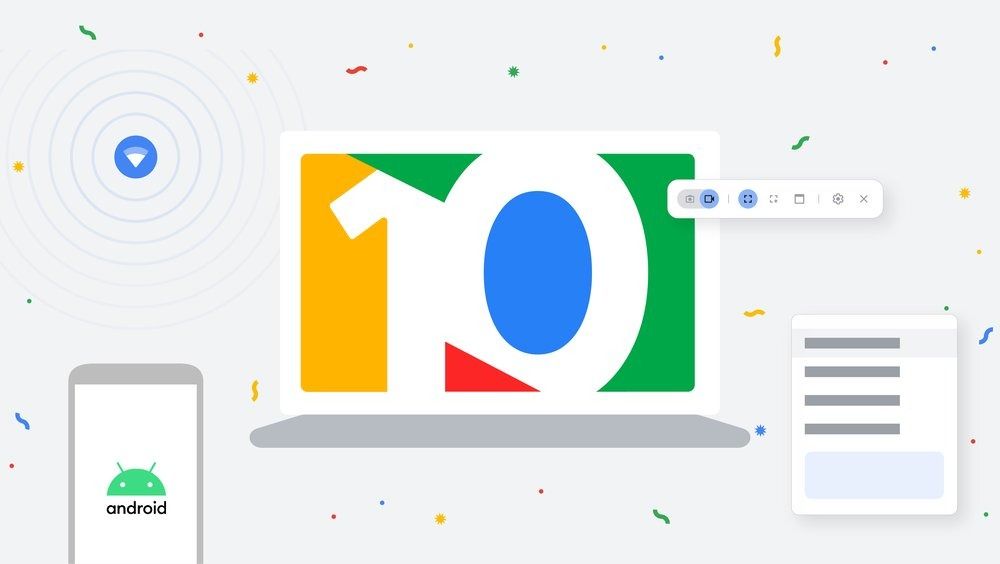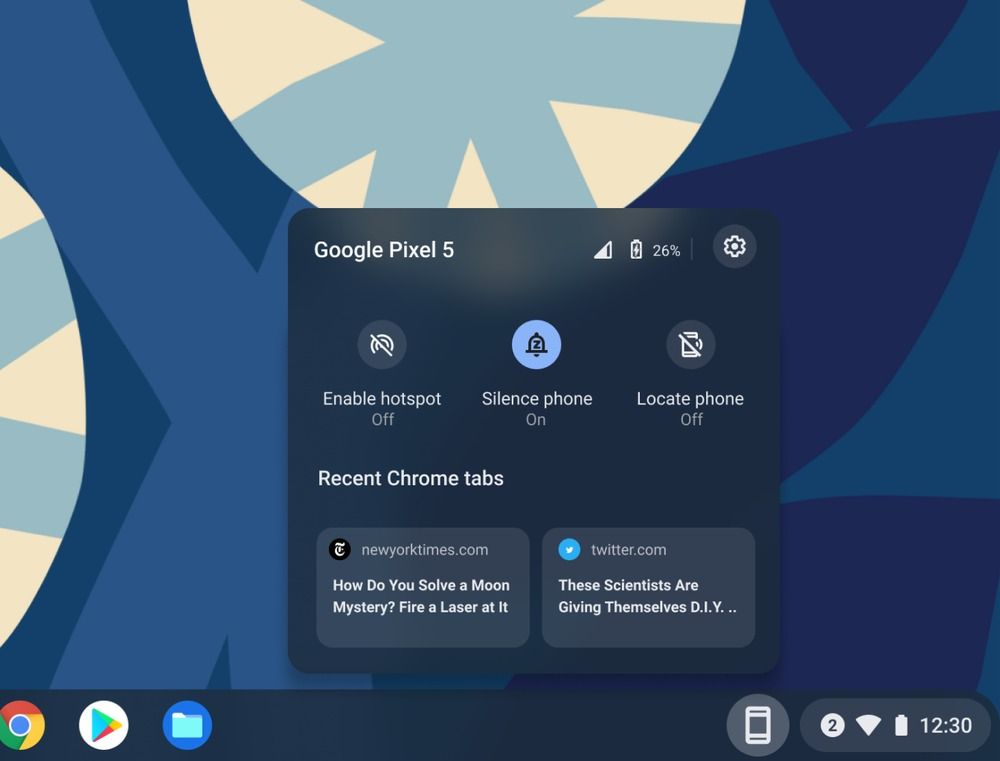Google is celebrating 10 years of Chrome OS by introducing several new features, from a screen capture tool to an enhanced clipboard for saving the last five items you copied. The update also includes a new Phone Hub that connects an Android phone to a Chromebook.
Image: Google
With Phone Hub, Chrome OS will display a new built-in control center that will allow you to check your phone’s battery life, turn on/off hotspot capabilities, and locate your device. You can also respond to messages and see your most recent Chrome browser tabs to pick up where you left off.
It’s a feature that will make Chrome OS a more powerful platform and provides the type of synergy users have been waiting for. Speaking of which, Google is also extending Wi-Fi Sync to work with more devices, so you can automatically connect your Chromebook to trusted Wi-Fi networks you’ve already used on your Android phone.
Google said it also plans to bring Nearby Share to Chrome OS, so you can quickly share files between your Chromebook and Android device. The feature made its debut on Android and will be a welcome addition to Chrome OS, finally providing laptop users with a rival to Apple’s AirDrop.
Google said it’s also making changes to Chrome OS that give users quicker access to what’s important. One of these features is Screen Capture in the Quick Settings menu. With Screen Capture, you can easily take screenshots and screen recordings. These files will then show up in Tote, a new space that keeps important files on your Shelf. Tote will also display your recent downloads and pinned files.
In addition, media controls are now built into the Quick Settings menu, making it easy to play, pause, and skip songs. Google said you could also pin the media player to your Shelf for even more immediate access. Google is also introducing a Quick Answers feature, which will let you right-click a word to get a definition, translation, or unit conversion.
And to help you better manage your workspaces, Google said it’s introducing improvements to Desks. When you reboot your device, all your windows will restore to their previous desks. You can switch between desks by swiping across your trackpad with four fingers and right-click the top of a window to send it to one or all desks.
Finally, Google is improving on existing features, too. Sharing files, images, and links between apps now takes fewer steps, while Google’s select-to-speak feature now includes controls to speed up, slow down, and pause the reading voice in real-time. Google said that icons for your Chromebook’s built-in apps have a fresh new look, which the company claims make it easier to identify essential apps made for Chrome OS.
It’s been a long road for Chrome OS, and these features show a platform that’s really coming into its own. The Phone Hub feature feels like a natural evolution of Chrome OS, while features like Desks, Nearby Share, and improved Wi-Fi Sync make the platform much more enjoyable to use.




